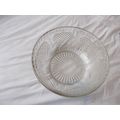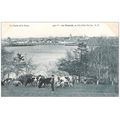St. Albans, Hertfordshire - Abbet SW - Photochrom Celesque postcard c.1910
- Condition : Used
- Dispatch : 2 Days
- Brand : None
- ID# : 128323557
- Quantity : 1 item
- Views : 351
- Location : United Kingdom

- Seller : justthebook (+1703)
- Barcode : None
- Start : Mon 19 May 2014 20:20:21 (BST)
- Close : Run Until Sold
- Remain : Run Until Sold
More Listings from This Seller view all
Seller's Description
- Postcard
- Picture / Image: St. Albans Abbey, (South West), Hertfordshire
- Publisher: Celesque series (Photochrom Co Ltd)
- Postally used: no
- Stamp: n/a
- Postmark(s): n/a
- Sent to: n/a
- Notes / condition:
Please ask if you need any other information and I will do the best I can to answer.
Image may be low res for illustrative purposes - if you need a higher definition image then please contact me and I may be able to send one.
------------------------------------------------
Postage & Packing:
UK (incl. IOM, CI & BFPO): 99p
Europe: £1.60
Rest of world (inc. USA etc): £2.75
No additional charges for more than one postcard. You can buy as many postcards from me as you like and you will just pay the fee above once. (If buying postcards with other things such as books, please contact or wait for invoice before paying).
Payment Methods:
UK - PayPal, Cheque (from UK bank) or postal order
Outside UK: PayPal ONLY (unless otherwise stated) please. NO non-UK currency checks or money orders (sorry).
NOTE: All postcards are sent in brand new stiffened envelopes which I have bought for the task. These are specially made to protect postcards and you may be able to re-use them. In addition there are other costs to sending so the above charge is not just for the stamp!
I will give a full refund if you are not fully satisfied with the postcard.
----------------------------------------------
Text from the free encyclopedia WIKIPEDIA may appear below to give a little background information (internal links may not work) :
*************
St Albans Cathedral (formerly St Albans Abbey, officially The Cathedral and Abbey Church of St Alban) is a Church of England cathedral church at St Albans, England. At 84 metres (276 ft),[1] its nave is the longest of any cathedral in England. With much of its present architecture dating from Norman times, it became a cathedral in 1877 and is the second longest cathedral in the United Kingdom (after Winchester). Local residents often call it ""the abbey"", although the present cathedral represents only the church of the old Benedictine abbey.
The abbey church, although legally a cathedral church, differs in certain particulars from most of the other cathedrals in England: it is also used as a parish church, of which the dean is rector. He has the same powers, responsibilities and duties as the rector of any other parish.[3]
Alban was a pagan living in the Roman city of Verulamium, where St Albans is now, in Hertfordshire, England, about 22 miles (35 km) north of London along Watling Street. Before Christianity became the official religion of the Roman Empire, local Christians were being persecuted by the Romans. Alban sheltered their priest, Saint Amphibalus, in his home and was converted to the Christian faith by him. When the soldiers came to Alban's house looking for the priest, Alban exchanged cloaks with the priest and let himself be arrested in his place. Alban was taken before the magistrate, where he avowed his new Christian faith and was condemned for it. He was beheaded, according to legend, on the spot where the cathedral named for him now stands. The site is on a steep hill and legend has it that his head rolled down the hill after being cut off and that a well sprang up at the point where it stopped.
A well certainly exists today and the road up to the cathedral is named Holywell Hill. However the current well structure is no older than the late 19th century and it is thought that the name of the street derives from the ""Halywell"" river and ""Halywell Bridge"", not from the well.[4]
The date of Alban's execution is a matter of some debate and is generally given as ""circa 250""—scholars generally suggest dates of 209, 254 or 304[citation needed].
The tomb of Saint Amphibalus is also in the cathedral.
A memoria over the execution point and holding the remains of Alban existed at the site from the mid-300s (possibly earlier); Bede mentions a church and Gildas a shrine. Bishop Germanus of Auxerre visited in 429 and took a portion of the apparently still bloody earth away. The style of this structure is unknown; the 13th century chronicler Matthew Paris (see below) claimed that the Saxons destroyed the building in 586.
Saxon buildings[edit]
Offa II of Mercia, who ruled in the 8th century, is said to have founded the Benedictine abbey and monastery at St Albans. All later religious structures are dated from the foundation of Offa's abbey in 793. The abbey was built on Holmhurst Hill—now Holywell Hill—across the River Ver from the ruins of Verulamium. Again there is no information to the form of the first abbey. The abbey was probably sacked by the Danes around 890 and, despite Paris's claims, the office of abbot remained empty from around 920 until the 970s when the efforts of Dunstan reached the town.
There was an intention to rebuild the abbey in 1005 when Abbot Ealdred was licensed to remove building material from Verulamium. With the town resting on clay and chalk the only tough stone is flint. This was used with a lime mortar and then either plastered over or left bare. With the great quantities of brick, tile and other stone in Verulamium the Roman site became a prime source of building material for the abbeys, and other projects in the area, up to the 18th century. Sections demanding worked stone used Lincolnshire limestone (Barnack stone) from Verulamium, later worked stones include Totternhoe freestone from Bedfordshire, Purbeck marble, and different limestones (Ancaster, Chilmark, Clipsham, etc.).
Renewed Viking raids from 1016 stalled the Saxon efforts and very little from the Saxon abbey was incorporated in the later forms.
Much of the current layout and proportions of the structure date from the first Norman abbot, Paul of Caen (1077–1093). The 14th abbot, he was appointed by the new Archbishop of Canterbury, Lanfranc.
Building work started in the year of Abbot Paul's arrival. The design and construction was overseen by the Norman Robert the Mason. The plan has very limited Anglo-Saxon elements and is clearly influenced by the French work at Cluny, Bernay, and Caen and shares a similar floor plan to Saint-Étienne and Lanfranc's Canterbury—although the poorer quality building material was a new challenge for Robert and he clearly borrowed some Roman techniques, learned while gathering material in Verulamium. To take maximum use of the hilltop the abbey was oriented to the south-east. The cruciform abbey was the largest built in England at that time, it had a chancel of four bays, a transept containing seven apses, and a nave of ten bays—fifteen bays long overall. Robert gave particular attention to solid foundations, running a continuous wall of layered bricks, flints and mortar below and pushing the foundations down to twelve feet to hit bedrock. Below the crossing tower special large stones were used.
The tower was a particular triumph—it is the only 11th century great crossing tower still standing in England. Robert began with special thick supporting walls and four massive brick piers. The four-level tower tapers at each stage with clasping buttresses on the three lower levels and circular buttresses on the fourth stage. The entire structure masses 5,000 tons and is 144 feet high. The tower was probably topped with a Norman pyramidal roof; the current roof is flat. The original ringing chamber had five bells—two paid for by the Abbot, two by a wealthy townsman, and one donated by the rector of Hoddesdon. None of these bells has survived.
There was a widespread belief that the abbey had two additional, smaller towers at the west end. No remains have been found.
The monastic abbey was completed in 1089 but not consecrated until Holy Innocents' Day, 1115, (28 Dec) by the Archbishop of Rouen. King Henry I attended as did many bishops and nobles.
A nunnery (Sopwell Priory) was founded nearby in 1140.
Internally the abbey was bare of sculpture, almost stark. The plaster walls were coloured and patterned in parts, with extensive tapestries adding colour. Sculptural decoration was added, mainly ornaments, as it became more fashionable in the 12th century—especially after the Gothic style arrived in England around 1170.
In the current structure the original Norman arches survive principally under the central tower and on the north side of the nave. The arches in the rest of the building are Gothic, following medieval rebuilding and extensions, and Victorian era restoration.
The abbey was extended in the 1190s by Abbot John de Cella (also known as John of Wallingford) (1195–1214); as the number of monks grew from fifty to over a hundred, the abbey was extended westwards with three bays added to the nave. The severe Norman west front was also rebuilt by Hugh de Goldclif—although how is uncertain, it was very costly but its 'rapid' weathering and later alterations have erased all but fragments. A more prominent shrine and altar to Saint Amphibalus were also added. The work was very slow under de Cella and was not completed until the time of Abbot William de Trumpington (1214–35). The low Norman tower roof was demolished and a new, much higher, broached spire was raised, sheathed in lead.
The St Albans Psalter (ca. 1130–45) is the best known of a number of important Romanesque illuminated manuscripts produced in the Abbey scriptorium. Later, Matthew Paris, a monk at St Albans from 1217 until his death in 1259, was important both as a chronicler and an artist. Eighteen of his manuscripts survive and are a rich source of contemporary information for historians.
Nicholas Breakspear was born near St Albans and applied to be admitted to the abbey as a novice, but he was turned down. He eventually managed to be accepted into an abbey in France. In 1154 he was elected Pope Adrian IV, the only English Pope there has ever been. The head of the abbey was confirmed as the premier abbot in England also in 1154.
type=printed postcards
theme=topographical: british
sub-theme=england
county/ country=hertfordshire
number of items=single
period=pre - 1914
postage condition=unposted
Listing Information
| Listing Type | Gallery Listing |
| Listing ID# | 128323557 |
| Start Time | Mon 19 May 2014 20:20:21 (BST) |
| Close Time | Run Until Sold |
| Starting Bid | Fixed Price (no bidding) |
| Item Condition | Used |
| Bids | 0 |
| Views | 351 |
| Dispatch Time | 2 Days |
| Quantity | 1 |
| Location | United Kingdom |
| Auto Extend | No |



 for 1 item(s)
for 1 item(s)
















